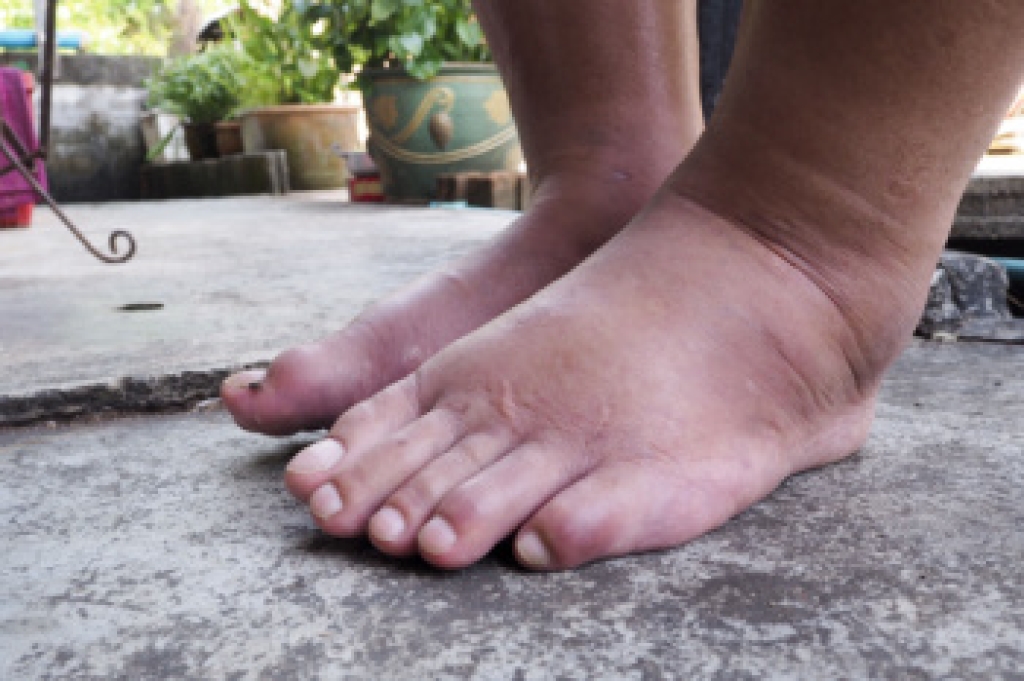
Swollen feet and ankles occur when excess fluid accumulates in the lower extremities, causing puffiness, discomfort, and limited mobility. This condition can result from a variety of underlying causes, including foot and ankle injuries that impair circulation, deep vein thrombosis where blood clots block veins, heart failure that reduces the heart’s ability to pump blood efficiently, or kidney disease that interferes with fluid balance. Swelling may be accompanied by pain, redness, warmth, or a feeling of heaviness. A podiatrist can evaluate the cause of the swelling, recommend appropriate treatment, suggest supportive footwear or orthotics, and offer therapies to improve circulation and reduce discomfort. If you notice persistent swelling in your feet or ankles, it is suggested that you schedule an appointment with a podiatrist who can provide effective relief tips.
Swollen feet can be a sign of an underlying condition. If you have any concerns, contact Sam Sanandaji, DPM of Foot and Ankle Care Center. Our doctor can provide the care you need to keep you pain-free and on your feet.
Swollen feet are a common ailment among pregnant women and people who stand or sit for extended periods. Aging may increase the possibility of swollen feet and patients who are obese often notice when their feet are swelling too. There may be medical reasons why swollen feet occur:
- Phlebitis - A condition that causes the veins to become inflamed and can also cause leg pain.
- Liver disease - This may lead to low blood levels of albumin which is a protein. This can cause fluid in the blood to pass into the tissues and several areas of the body can become swollen.
- Heart failure - When the heart doesn’t pump properly the blood that is normally pumped back to the heart can pool in the veins of the legs causing swollen feet.
- Kidney disease - One of the main functions of the kidneys is releasing excess fluid in the body. This type of condition can make it difficult for the kidneys to function properly, and as a result the feet may become swollen.
- Deep-vein thrombosis (DVT)- This is a serious condition where blood clots form in the veins of the legs. They can block the return of blood from the legs to the heart which may cause the feet to swell. It is important to be treated by a podiatrist if this condition is present.
Swollen feet can also be caused by bone and tendon conditions, including fractures, arthritis, and tendinitis. Additionally, there may be skin and toenail conditions and an infection may cause the feet to swell. Patients who take medicine to treat high blood pressure may be prone to getting swollen feet.
Many patients elevate their feet to help relieve the swelling and this is generally a temporary remedy. When a podiatrist is consulted the reason behind the swelling can be uncovered and subsequently treated.
If you have any questions please contact our office located in Beverly Hills, CA . We offer the newest diagnostic and treatment technologies for all your foot and ankle needs.




